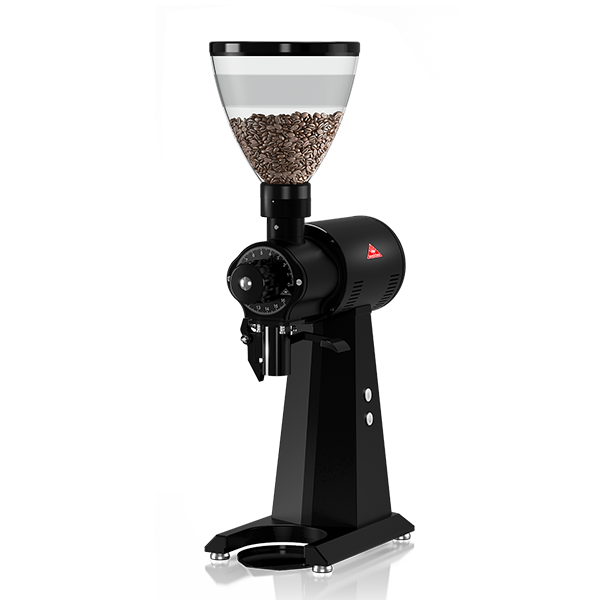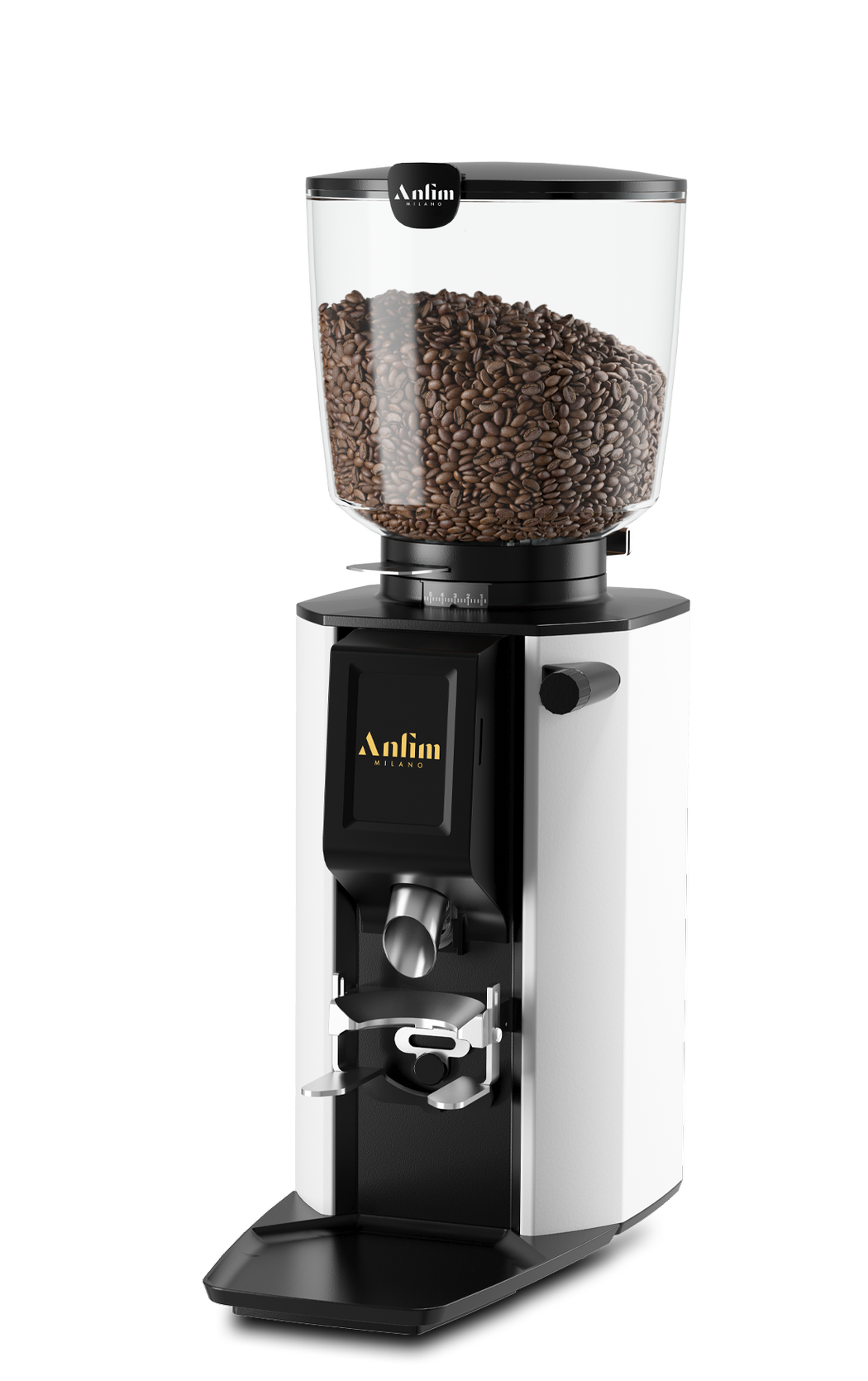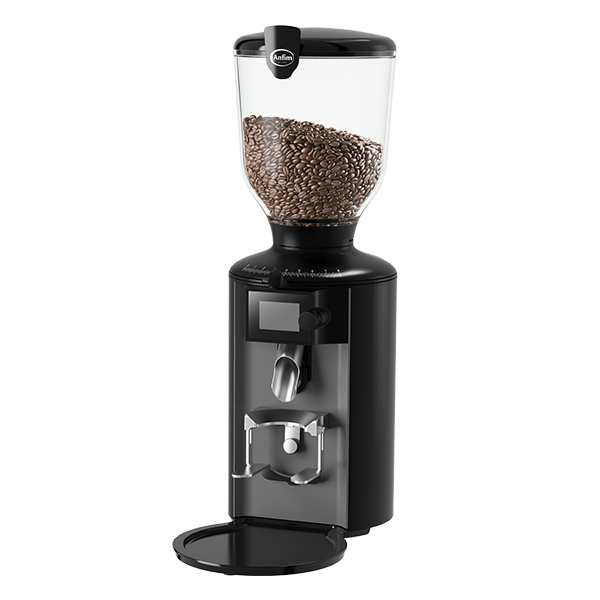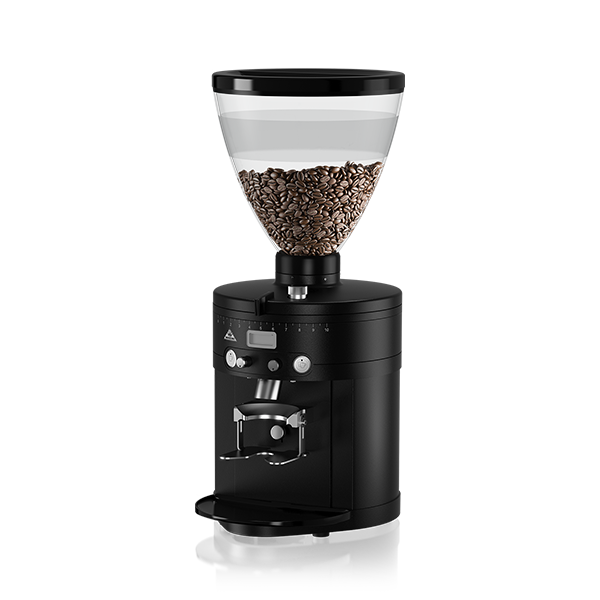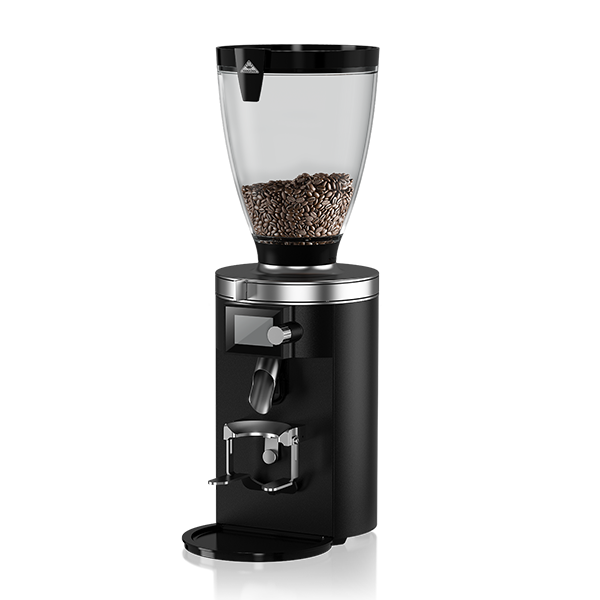One of the necessities in running a successful café is being able to provide inclusive options to your customer base. Whether it be gluten free and vegan snacks, non-dairy alternative milks, non-coffee hot drinks or alcohol-free options in the evenings.
Amongst growing interest in alternative options, customers are also increasingly asking for decaf coffee. The growing public consciousness is becoming more aware of the effects of caffeine on sleep quality and health outcomes, and with more roasters offering higher quality decaf coffees, one of the trends for 2024 is for decaf coffee demand to continue rising.
Coffee shops who are not currently serving a great decaf option are missing out on a growing segment of market demand. So – Let’s cover exactly what you’ll need to serve a great decaf coffee in your coffee shop.
- Buy a High Quality Decaf
- Properly Store Your Beans
- Grind Fresh
- Nail the Extraction Basics


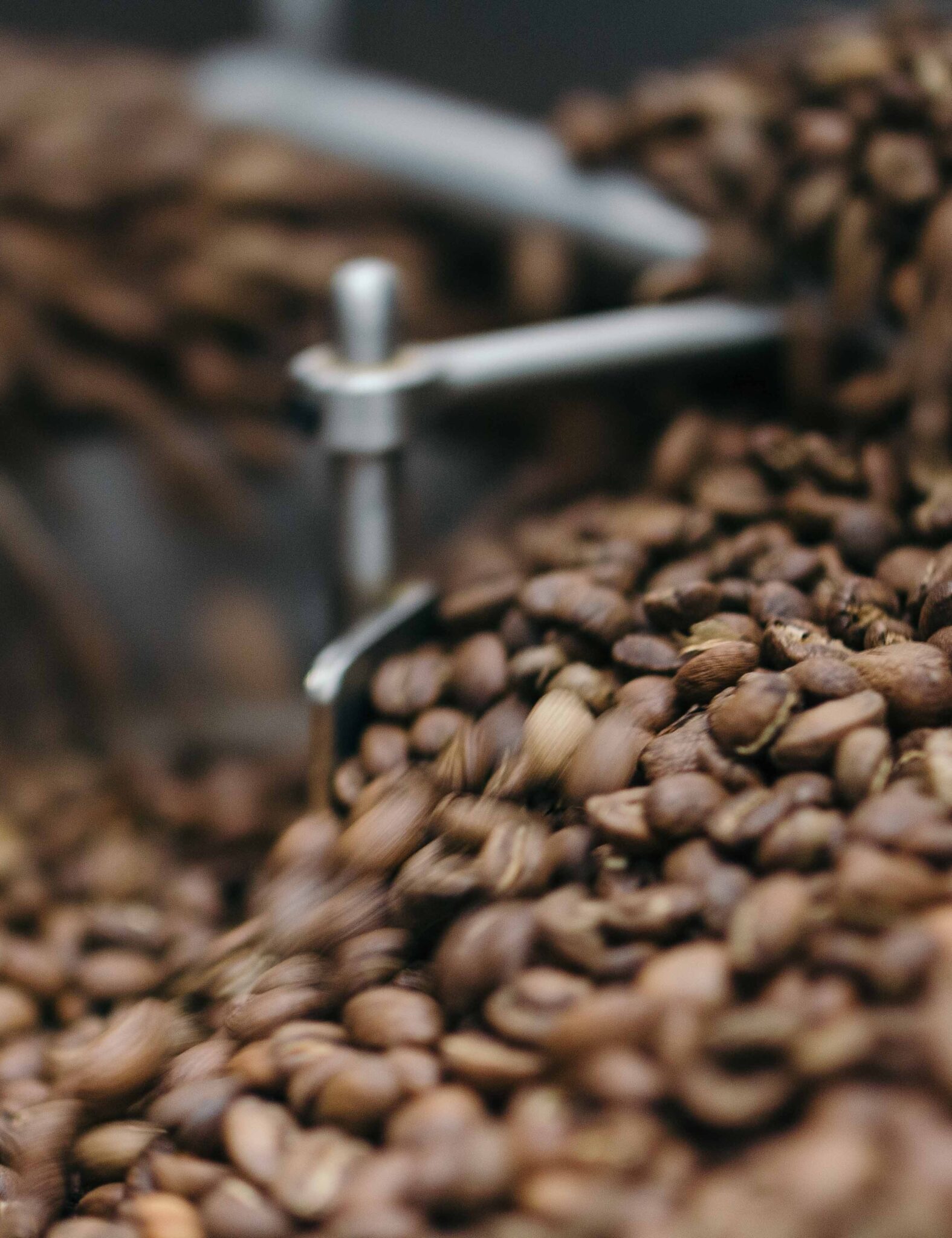

Buying a Quality Decaf Coffee
If there’s one piece of advice chefs will offer a home cook looking to improve their meals, it’s that great, local, fresh ingredients are a necessity. The same is true of an incredible cup of coffee, and that extends to decaf. Without delicious raw ingredients, you won’t get far.
Step one in serving great decaf in your shop is to invest in a high-quality decaf coffee. The good news is that most wholesale roasters are now offering a great decaf for their customers and will typically offer it on the side of your main espresso blend as an additional cost and in smaller quantities.
Decaf coffees are typically more expensive than your typical wholesale house blend thanks to the additional processing. For example, the popular Mexico decaf is at the top end of the price range from our Roots Collection, thanks to the additional cost in the Swiss Water decaf processing.
Buying a great decaf coffee that is cared for all the way from the farm to the roasted bean is paramount to serving an impressive cup of decaf.
Properly Storing the Beans
Now you have a great coffee, it’s time to treat it with care. Coffee is a fresh food product and should be treated as such, with improper storage leading to faster staleness and a degrading of the flavour intensity.Even when stored properly, freshly roasted coffee beans typically have just a few weeks of life for capturing the best flavour out of them. What’s more, decaf coffees also seem to age faster than their caffeinated counterparts thanks to the additional processing involved.
To properly store your decaf coffees for freshness, firstly make sure you’re only buying the quantities that you’ll need. A good practice is to buy no more than one month’s supply at any one time, as unused coffee will quickly go stale on the shelf. This can be negated, however, by storing any coffee that you won’t be using in the freezer, which will extend its lifespan greatly.
Additionally, make sure that your coffee is stored airtight in their original packaging, and out of direct sunlight if possible. Also note that darker roasts will degrade faster than lighter roasts, but best storage practices remain constant for all coffees.
Grinding Fresh
On top of taking care of storage, grinding the coffee fresh is an important step in the process for ensuring you’re getting the most flavour from your coffee. Additionally, grinding fresh will allow you to fine-tune the grind size, recipes and ratios for your decaf coffee individually from your main espresso for the best flavour possible.
If you’re looking for a bean to cup machine, you’ll want one that can offer at least two different hoppers in order to grind your decaf fresh. Similarly if you’re operating on a traditional espresso machine setup, you’ll want an additional grinder that is separate from your standard house coffee, so that you can grind your decaf fresh without upsetting your workflow.
A great recommendation for a coffee shop would be to invest in an inexpensive second espresso grinder that allows for single dosing. This would allow you to offer a wide range of coffees separate from your main espresso, that are freshly ground to order e.g. a decaf along with a seasonal menu of filter coffees or guest espressos.
Nailing the Basics
Now you’re serving freshly ground, freshly roasted, high quality coffees, it’s time to get the best out of them by nailing the basics – espresso ratio, extraction time, and grind size. For a deep dive on these topics, check out Calibrating a Coffee Grinder for Espresso , and A Beginner’s Guide to Espresso Ratios.
Espresso Ratio
Refers to the ratio of coffee grounds in the portafilter : liquid espresso in the cup, typically expressed in a base ratio e.g. 1:2 or in weight e.g. 18g:36g. Ratio is directly tied to extraction and flavour, with a longer ratio leading to more water going through the puck, extracting more flavour but having a more dilute beverage.
To get started brewing your decaf coffee, we recommend an espresso ratio of 1:2. For example an 18 gram dose in the portafilter and 36 grams of espresso in the cup. Lighter roasted coffees may need a higher extraction, so may be better suited to longer ratios e.g. 1:3, whereas dark roasts may be best with a shorter 1:1.5 ratio minimising the amount of bitterness in the cup. However, starting at 1:2 will give you a great starting point for perfecting your espresso and getting a great flavour out of your decaf coffee.
Extraction Time
This one is self-explanatory, referring to the amount of time your espresso takes to brew to your desired recipe and ratio. For a standard ratio of 1:2, an extraction time between 24-30 seconds will give you a great result. To keep your extraction time consistent within this target range, you’ll need to fine tune your espresso by tweaking your grind size.
Grind Size
The final basic you need to understand for great decaf coffee. Fine tuning your grind size will let you achieve your target extraction time and get the best flavour out of your coffee.
If your coffee tastes strong and sour, it’s likely under-extracted and running too quickly. Grinding the coffee slightly finer will add surface area to the puck, slow down the water and increase the brew time, leading to a higher extraction and less sourness.
Similarly, if the coffee tastes weak and bitter, it’s probably running too slowly and needs a grind size that isn’t quite as fine. Grinding coarser will reduce surface area and contact time leading to a slightly lower extraction.
Learn more here: How to Troubleshoot a slow shot of espresso
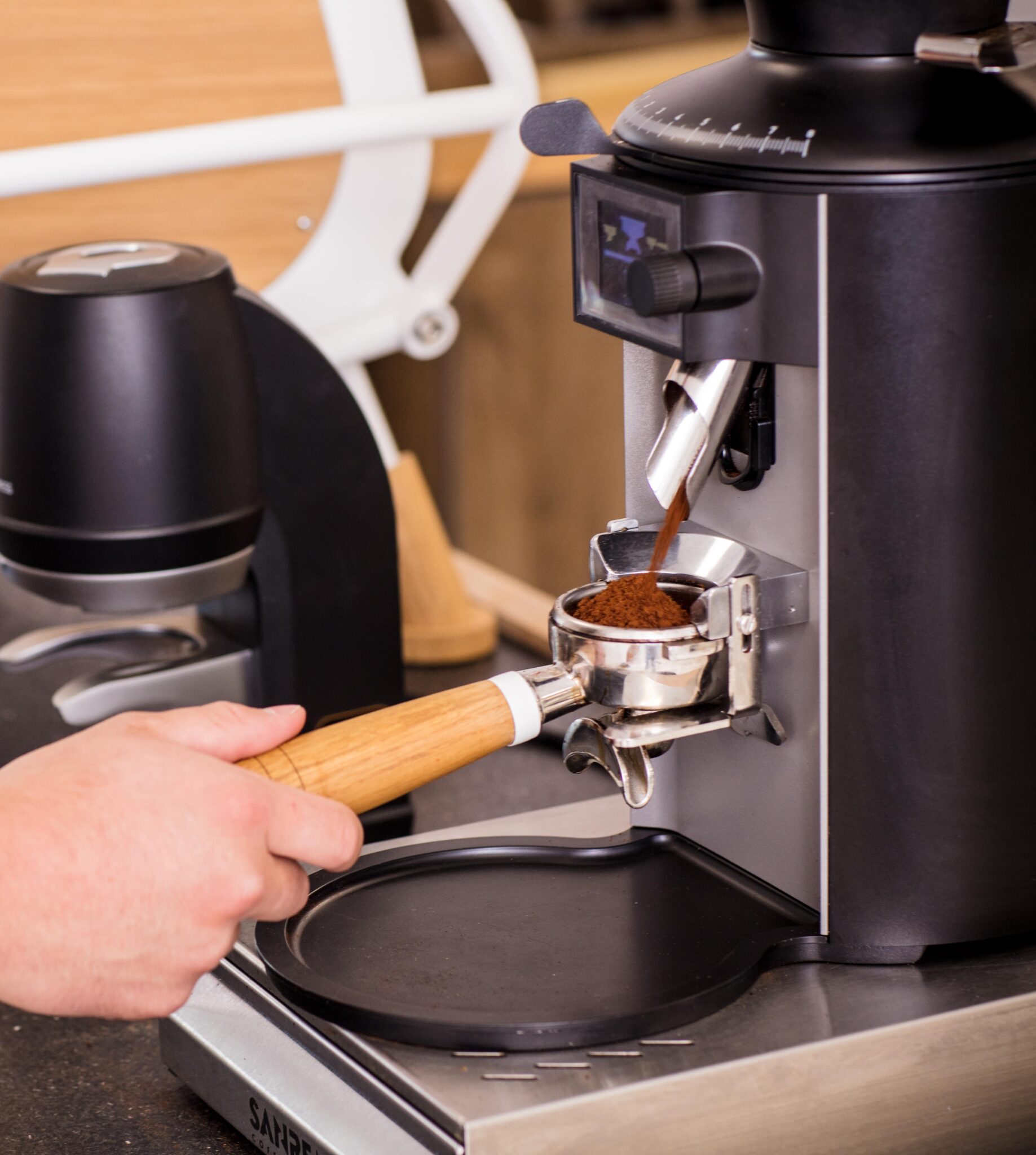

Do you Need a Second Grinder for Decaf?
In coffee shops, one of the factors behind that often-disappointing cup of decaf is that the coffee is stale and not properly dialled in. The main cause behind these issues is that the coffee shop is not treating the decaf with the same amount of care – i.e grinding fresh and properly dialling in the grind size.
This leads to the question of ‘do you need a second grinder for decaf?’. Well technically, no.
To start offering decaf espresso, all you technically need is a finely ground decaf coffee. This may not taste great if it’s been left to go stale and isn’t the ideal grind size, but it’s definitely a start. If you don’t want to invest in an additional decaf grinder, there are still some things you can do to improve your pre-ground decaf coffee.
How to Get the Best out of Pre-Ground Decaf Coffee
If you want to trial serving a decaf option or make small improvements to your offering before investing in a grinder, there are a few things you can do to get great drinks from pre-ground coffee.
Buying Small Quantities
Having your roaster grind the coffee for you is not such an issue if you’re buying small batches at regular intervals. As soon as you grind coffee, you massively increase the surface area and speed up the staling process.
Ordering smaller quantities will mean you reduce the amount of time between the coffee being ground, and the coffee being brewed, reducing the amount of staling of the grounds. Bonus points if you can buy the coffee in small bags and reduce the amount of time that it’s exposed to the air.
Up-dosing
Pre-ground coffee typically has less flavour overall compared to freshly ground coffee. To combat this, you can ‘updose’ your coffee to increase the amount of dissolved solids in your espressos. For example, taking your regular 18 gram dose up to 20 grams will add 11% more coffee and therefore bring back some of the flavour and aroma lost during the staling process.
Dialling by Ratio
If you’re buying pre-ground decaf, you can’t dial in the espresso by fine tuning your grind size. However, all is not lost.
Dialling in the taste of your coffee is not solely achieved by changes to your grind size – it can also be accomplished by tweaking your dose and ratio. Where your coffee is under-extracted, you can increase extraction by running more water through the puck. Similarly, if you’re looking to fix over-extraction, you may be able to dial things back by reducing the water.
Not having complete control over grind size is certainly not ideal but does not stop you from dialling in the flavour of your coffee. Start at a 1:2 ratio and decrease or increase the water going through the puck as needed.
Let’s Make a Start – 4 Steps to Serving Great Decaf
So we’ve covered all of the important factors, now where do you start? Here’s your four step gameplan for offering a great decaf coffee in your coffee shop.
1. Source a delicious decaf coffee
Great decaf coffees can be found all over the world, and your supplier may even have multiple options to try. Why not try our single origin decaf from Mexico found within our Roots Collection, or the Brazilian decaf from our Amico Range.
2. Buy in small quantities and store properly
Buy in small, regular batches stored air-tight and out of sunlight to maintain the best freshness of your decaf beans. For best results, buy whole bean and grind fresh.
3. Consider investing in an additional grinder
Not a necessary step, but a gamechanger in improving the flavour quality and quantity from your decaf coffee. Shop for an additional espresso grinder here -> Grinders and Accessories
4. Dial in your espresso
Nail the basics and fine tune over time to get the best flavour from your coffee. For a traditional double shot of espresso, try starting with 18 grams of coffee to 36 grams of espresso in 26 seconds.
So, that’s how to serve a great decaf coffee for your coffee shop. If you’re still thinking about which coffee drinks you should be serving and need a menu with full recipes, learn more here -> Sample Coffee Shop Hot Drinks Menu with Recipes


